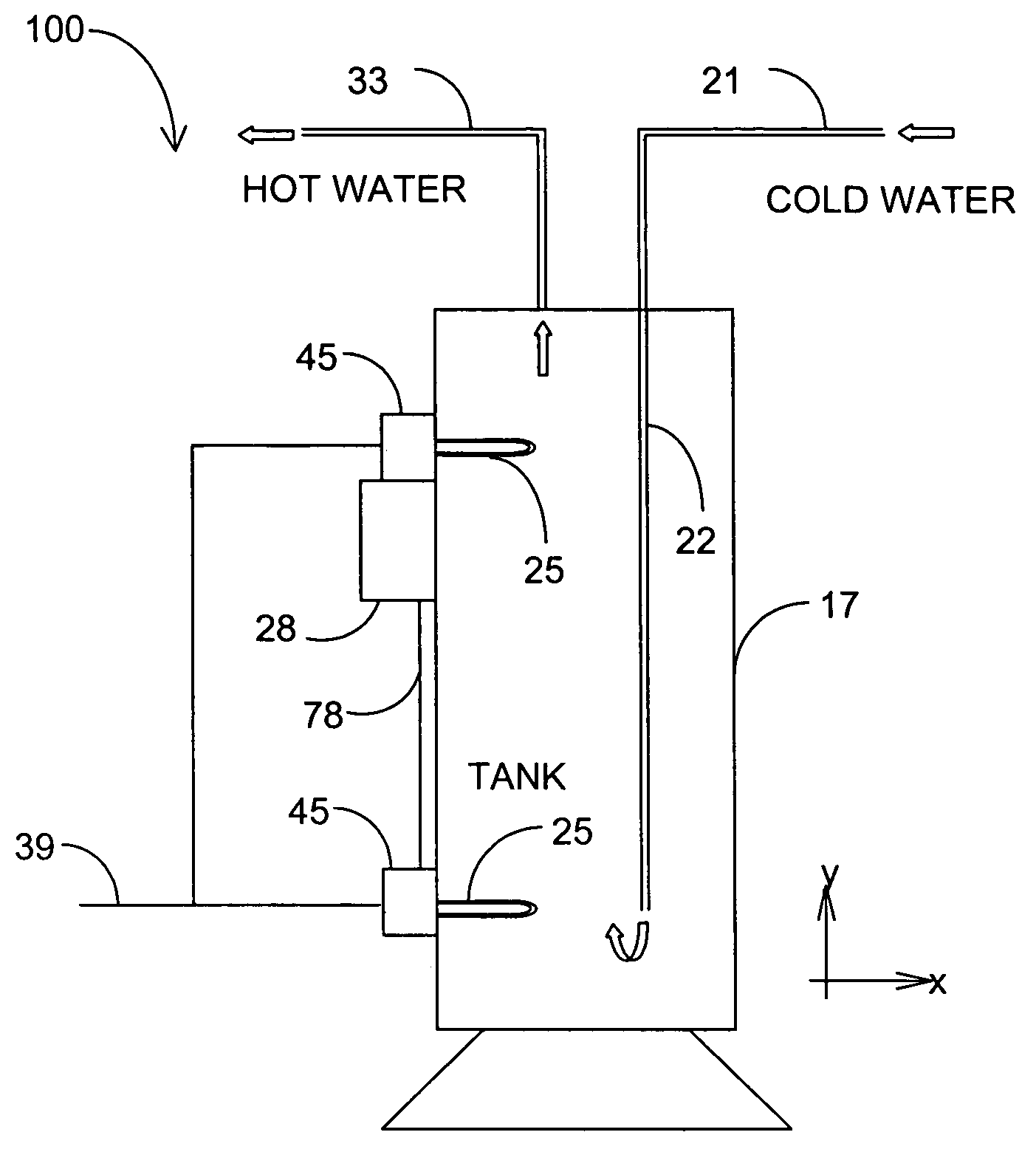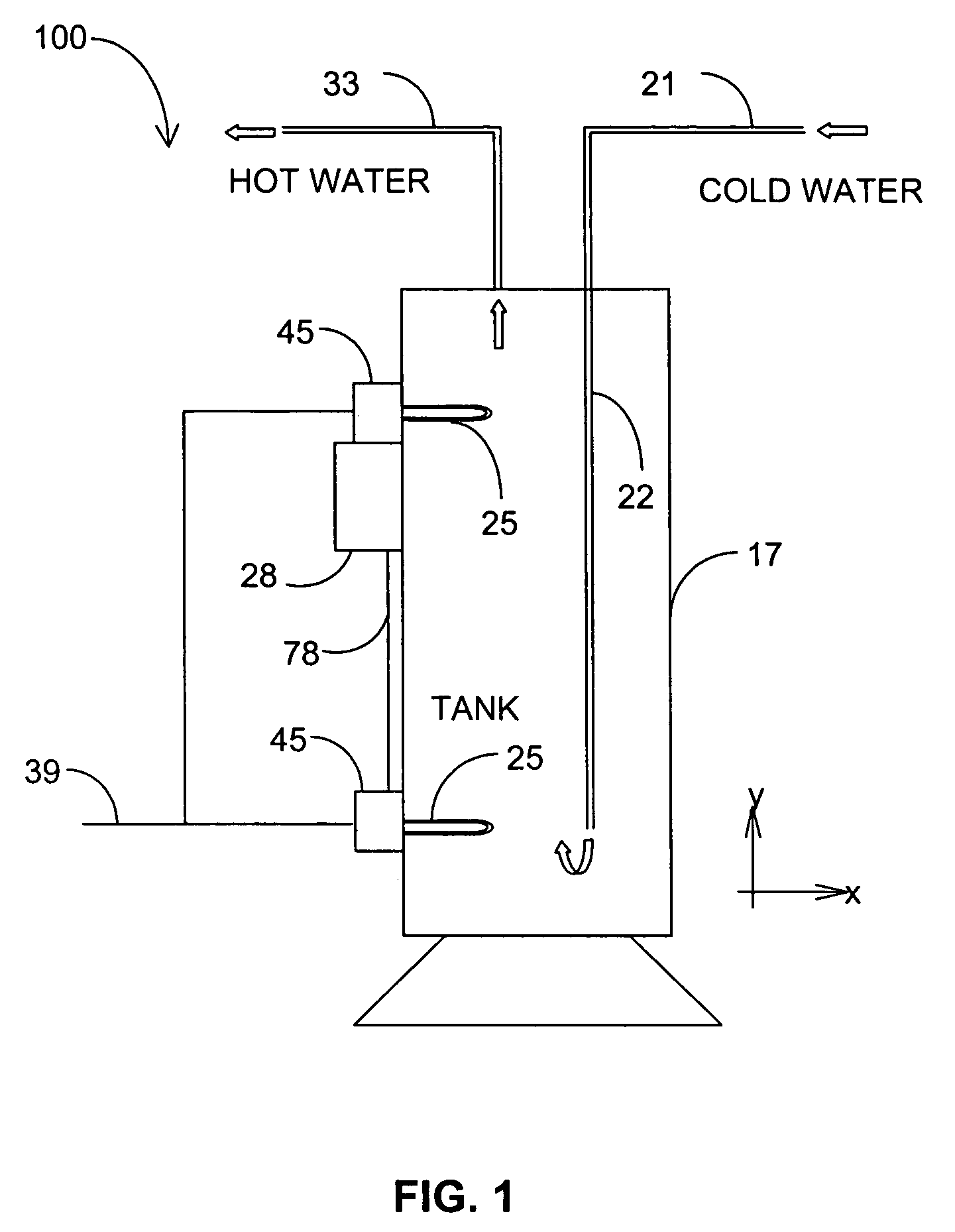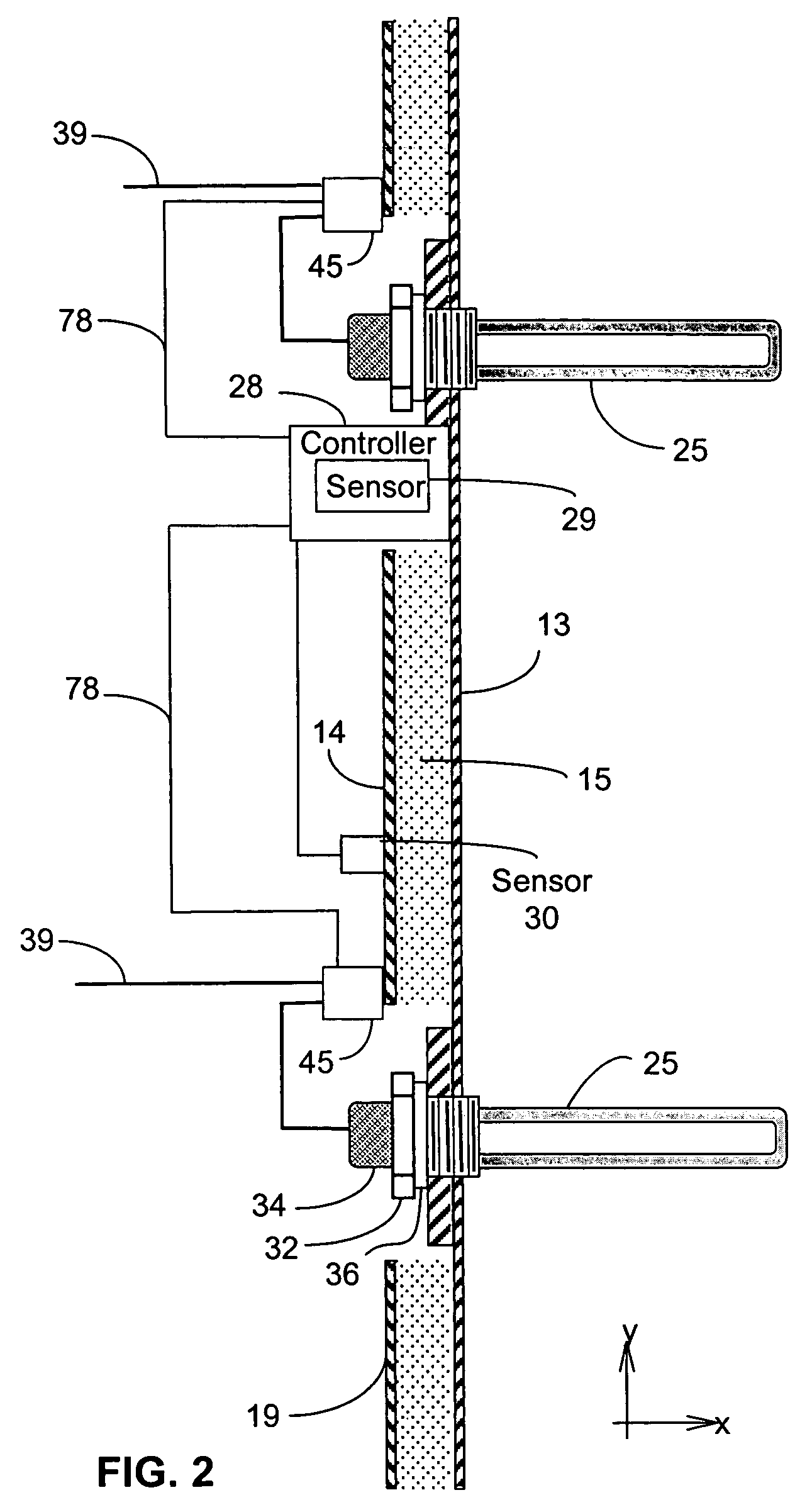System and method for preventing overheating of water within a water heater tank
a water heater and water tank technology, applied in the field of electric hot water heaters, can solve the problems of water drawn from the tank to significantly exceed the upper set point, water within the tank to become overheated, pain or injury to users,
- Summary
- Abstract
- Description
- Claims
- Application Information
AI Technical Summary
Benefits of technology
Problems solved by technology
Method used
Image
Examples
Embodiment Construction
[0017]Reference will now be made in detail to embodiments of the disclosure, examples of which are illustrated in the accompanying figures. Wherever possible, the same reference numerals will be used throughout the drawing figures to refer to the same or like parts.
[0018]Generally, and as depicted in FIG. 1, a water heating system 100 has a controller 28 and at least one relay 45 for applying electrical power to at least one heating element 25 located within a water tank 17. Cold water is supplied to the water tank 17 by cold water pipe 21, and the cold water flows down (in the negative y direction) a filler tube 22 into the bottom section of the tank. Hot water is drawn (exits to a user) out of the upper section of the tank through hot water pipe 33. Note that FIG. 1 depicts two heating elements 25, an upper heating element (in the upper section or half of the tank 17) and a lower heating element (in the lower section or half of the tank 17). Other numbers and locations of heating ...
PUM
 Login to View More
Login to View More Abstract
Description
Claims
Application Information
 Login to View More
Login to View More - R&D
- Intellectual Property
- Life Sciences
- Materials
- Tech Scout
- Unparalleled Data Quality
- Higher Quality Content
- 60% Fewer Hallucinations
Browse by: Latest US Patents, China's latest patents, Technical Efficacy Thesaurus, Application Domain, Technology Topic, Popular Technical Reports.
© 2025 PatSnap. All rights reserved.Legal|Privacy policy|Modern Slavery Act Transparency Statement|Sitemap|About US| Contact US: help@patsnap.com



